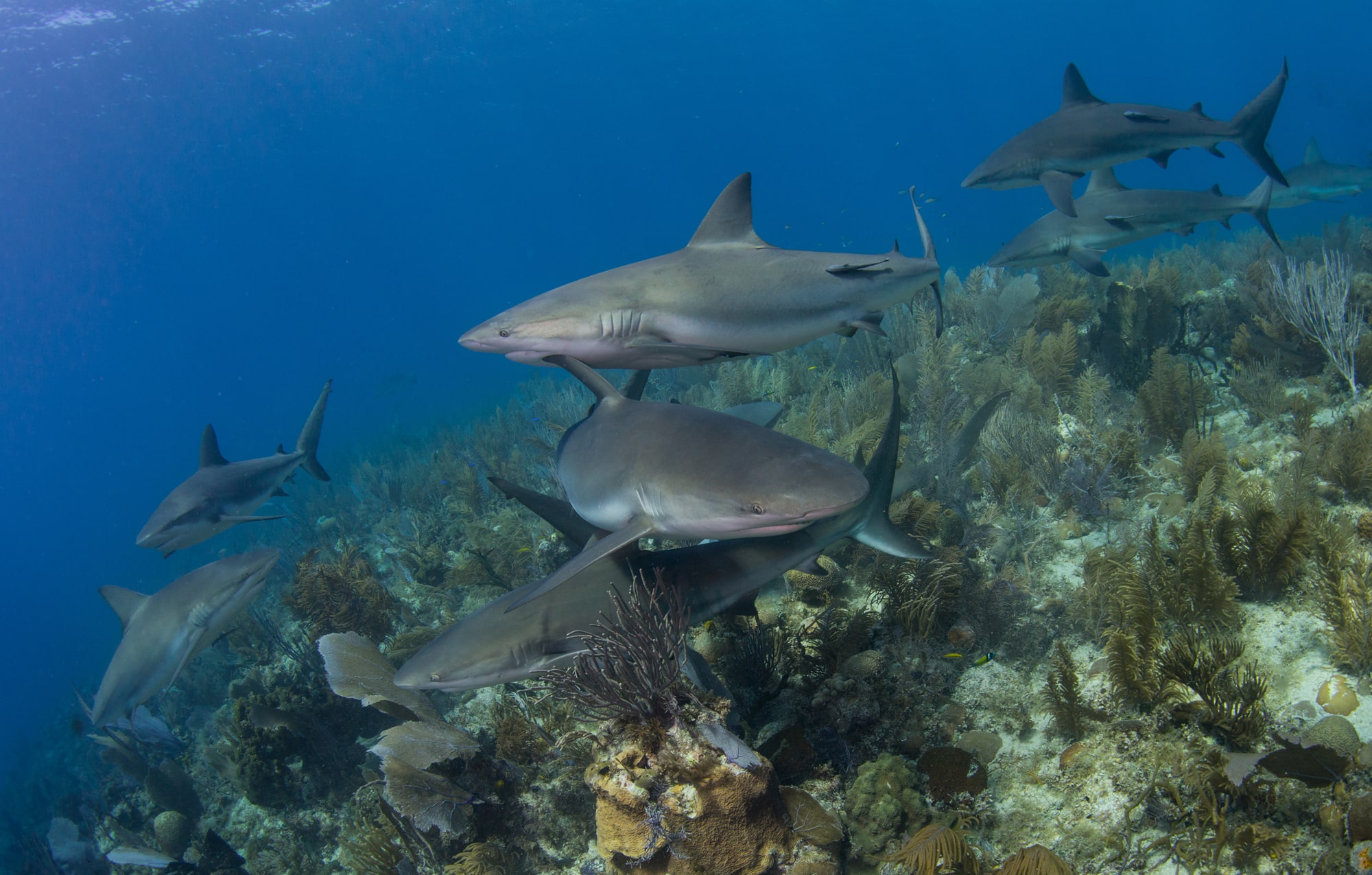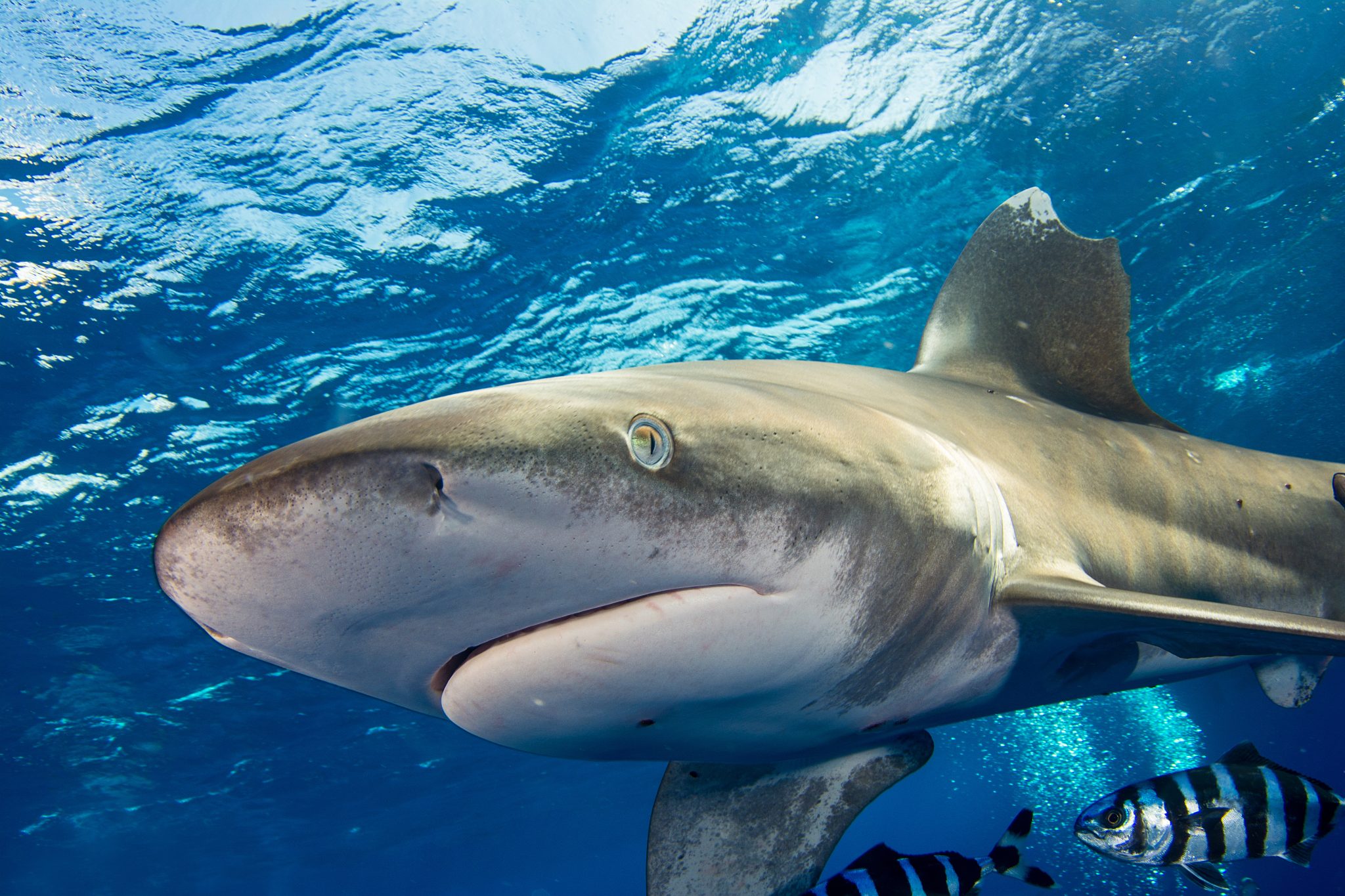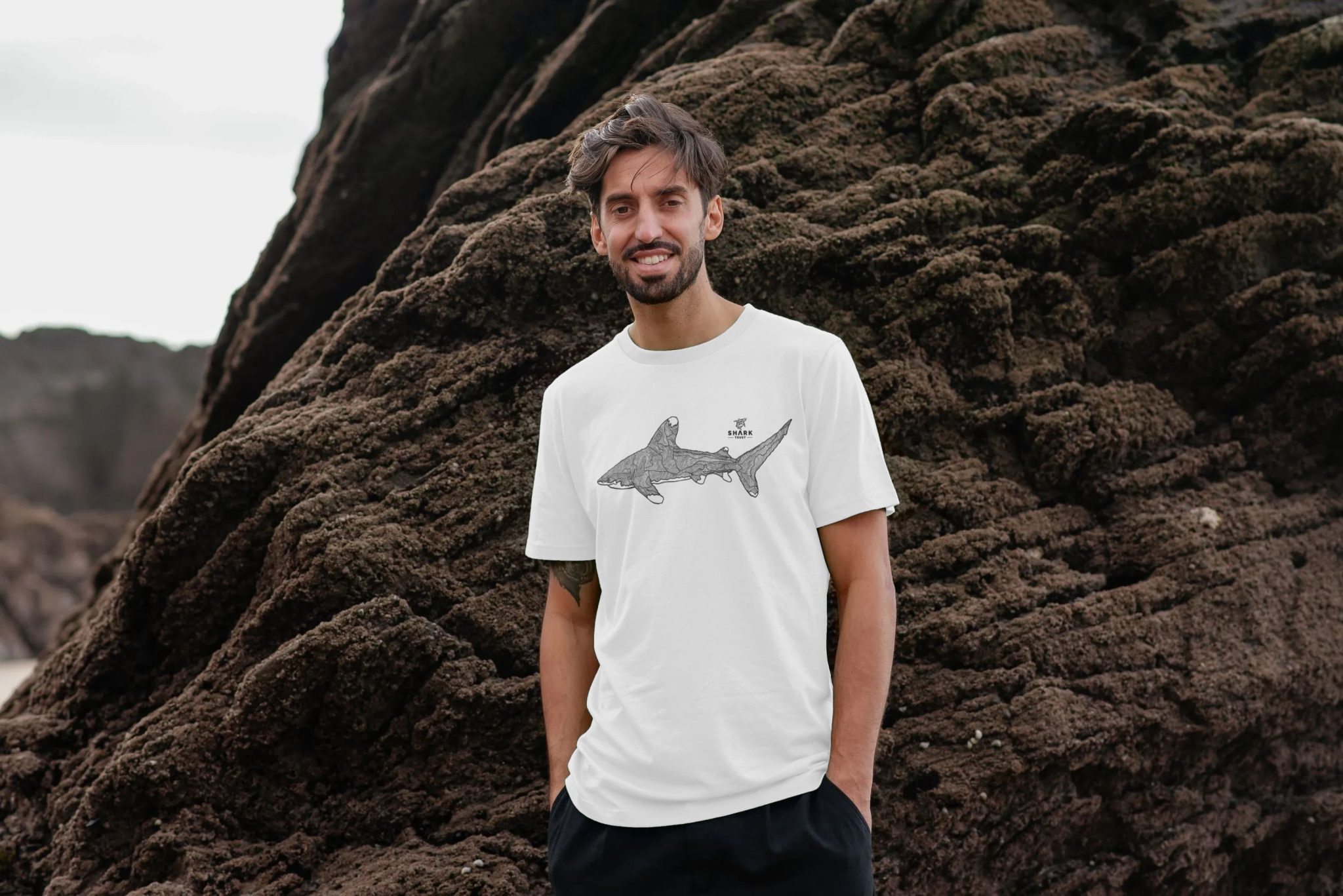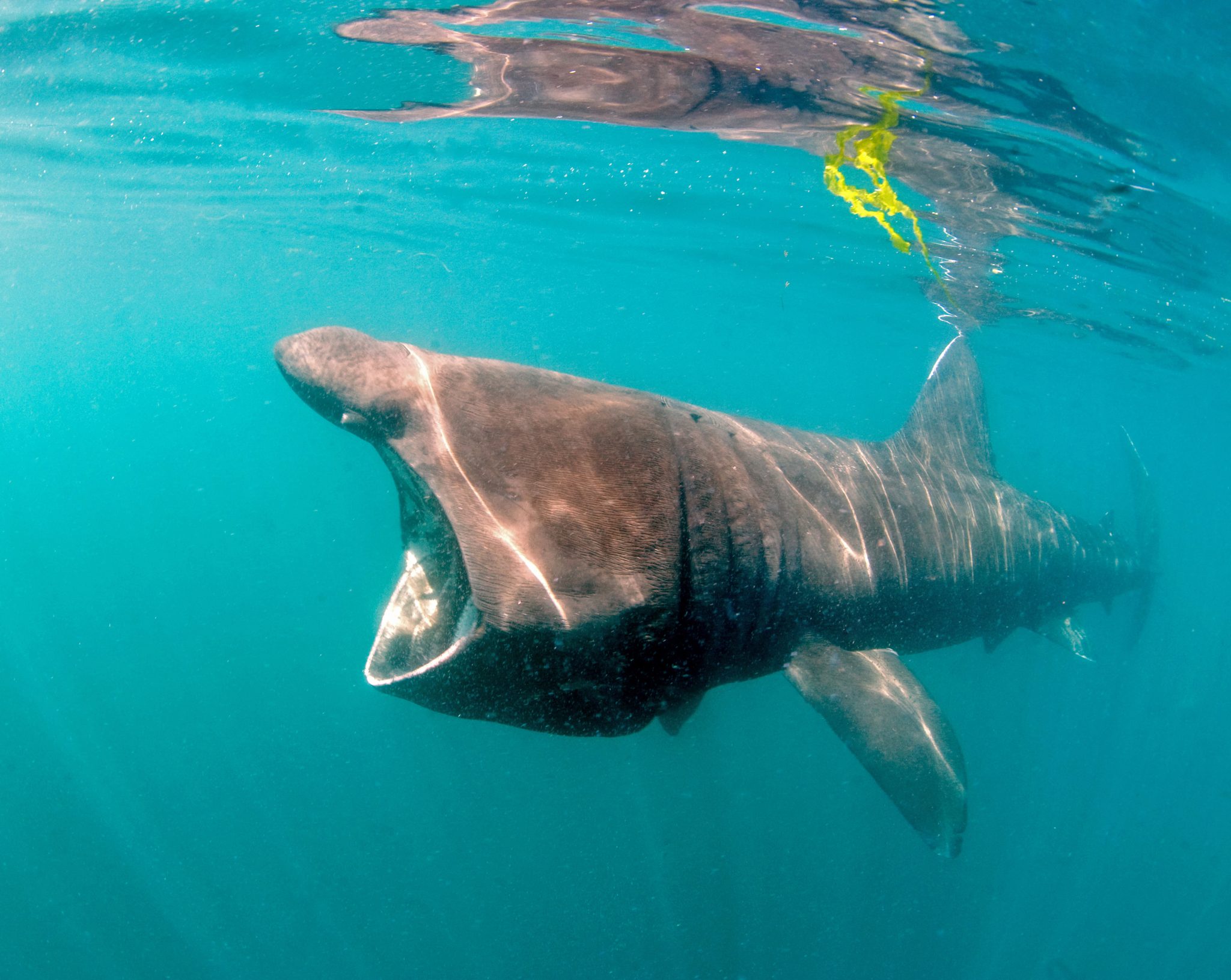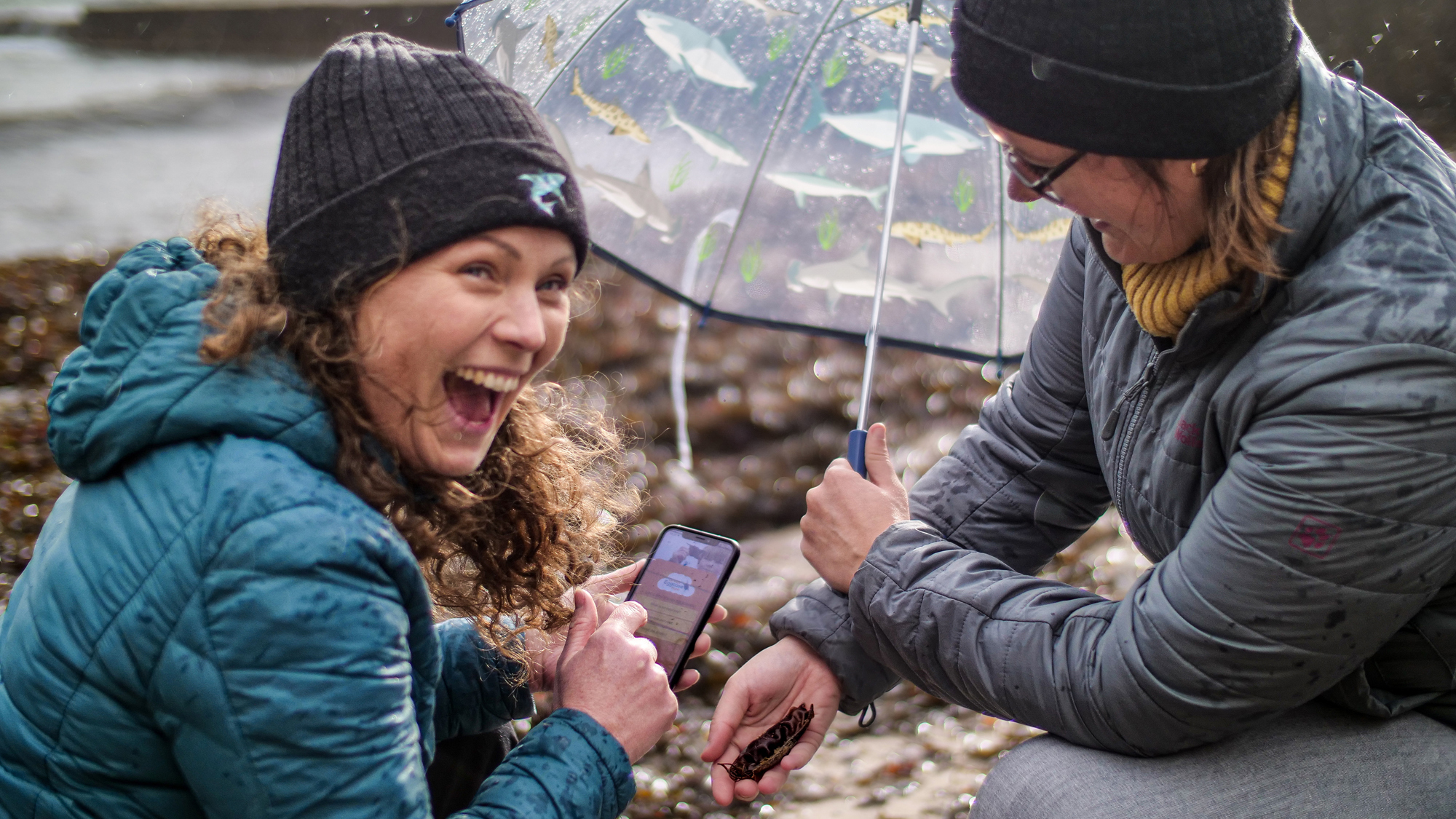Marine Life & Conservation
Love sea turtles? Here’s 10 of the best places to dive with them!
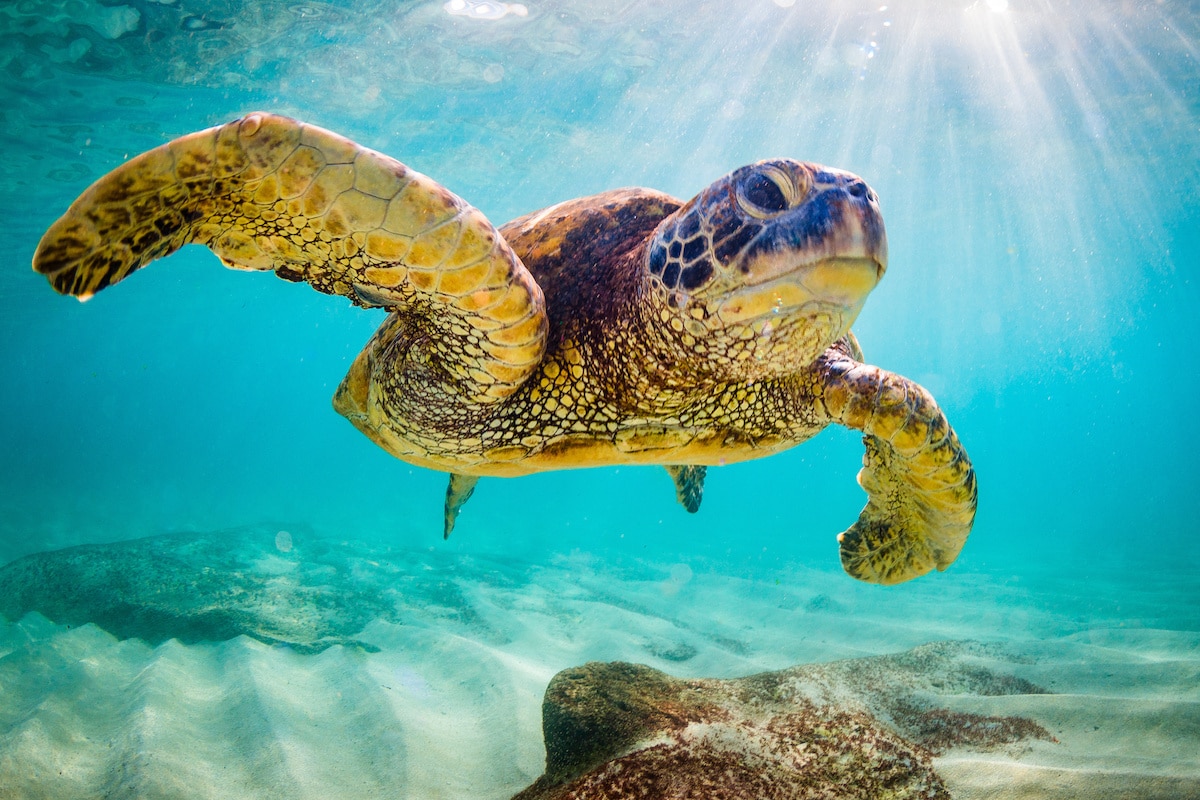
Is there anything better than diving with sea turtles? These ancient animals are ever-popular with divers and you can find them at top dive destinations around the world.
Whether you want to dive close to home or further afield, there’s a turtle hotspot waiting for you.
Here are our top 10 places to go sea turtle diving.
1. Galapagos Islands
This epic dive destination is teeming with wildlife above and below the waterline. As well as giant Galapagos tortoises, you can also spot unique Galapagos green turtles at these special islands.
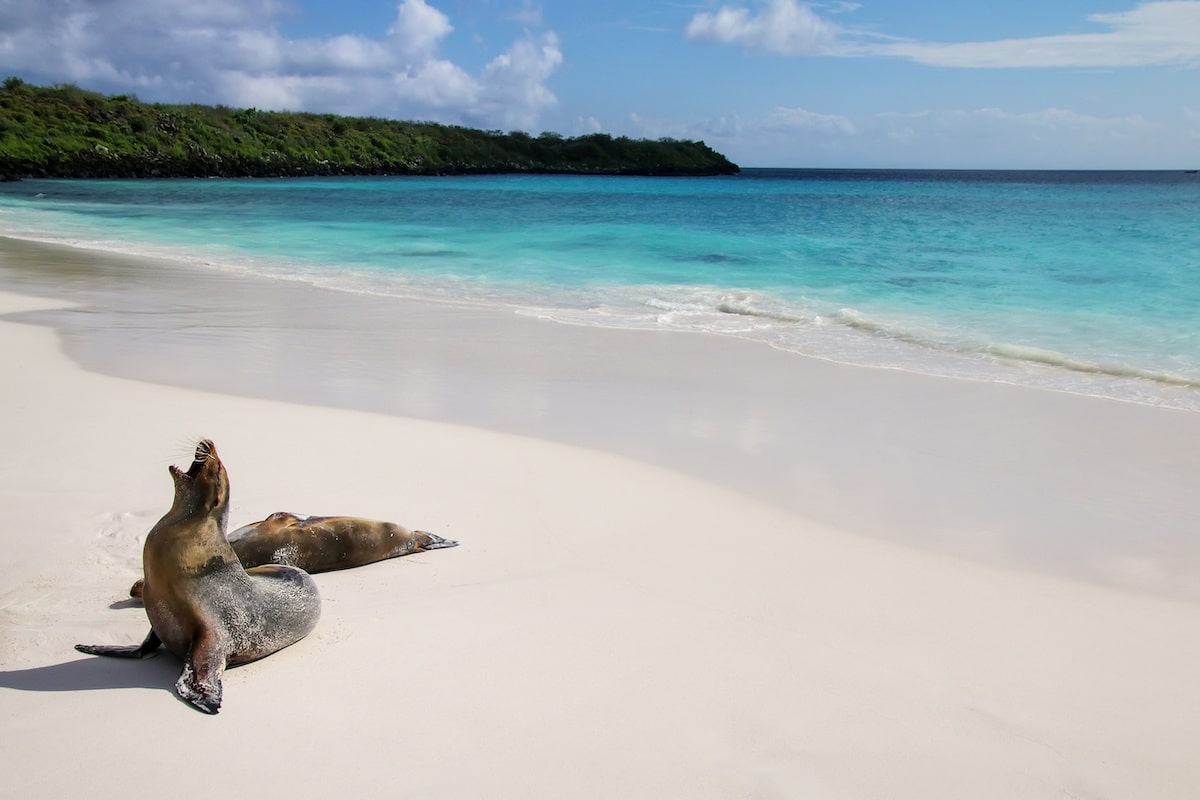
This subspecies of the green sea turtle is recognisable by the slightly darker, more domed shell and serrated lower jaw.
Go Galapagos diving at Punta Vicente Roca, on the northwest coast of Isabela Island, and you’ll see plenty of Galapagos green turtles hanging out there.
- Nesting season: December to March
- Hatching season: February to May
- Liveaboard top choice: Nortada
2. Hawaii
Hawaii is no stranger to top dive destination wish lists thanks to its lava landscapes and abundant marine life, including numerous species found nowhere else on Earth.
Hawaii’s rich waters host 5 of the 7 species of sea turtle, with Hawaiian green and hawksbill turtles commonly seen.
You can spot green sea turtles at various places, including Maui and Oahu. Leatherback, loggerhead and olive ridley turtles are also sometimes seen.
- Nesting season: May to October
- Hatching season: July onwards up to late December
- Liveaboard top choice: Kona Aggressor II
3. Great Barrier Reef, Australia
The Great Barrier Reef is one of the best places to see numerous sea turtles; at Raine Island in the far northern reefs.
This important sea turtle nesting area host tens of thousands of green sea turtles each year during their breeding season.

Image: Mike Ball Dive Expeditions
Go northern Great Barrier Reef scuba diving and you can see plenty of turtles in the waters surrounding Raine Island, plus at Ribbon and Osprey reefs further south.
- Nesting season: November to January
- Hatching season: January to March
- Liveaboard top choice: Spoilsport for Turtle Spectacular Northern Reefs safaris
4. Egypt
Seagrass beds are one of the best places to spot grazing green sea turtles, whereas Hawksbill turtles are more commonly seen feeding at reefs.

If you go Egypt diving, make sure you visit Abu Dabbab Bay at Marsa Alam. The seagrass beds there are known for encounters with dugongs and green sea turtles.
The reefs along Hurghada are a good place to spot Hawksbill turtles.
- Nesting season: July to August
- Hatching season: September to November
- Liveaboard top choice: Emperor Elite
5. Fiji
Known for its colourful soft corals, Fiji has idyllic reef diving, white-sand beaches and plenty of sea turtles.
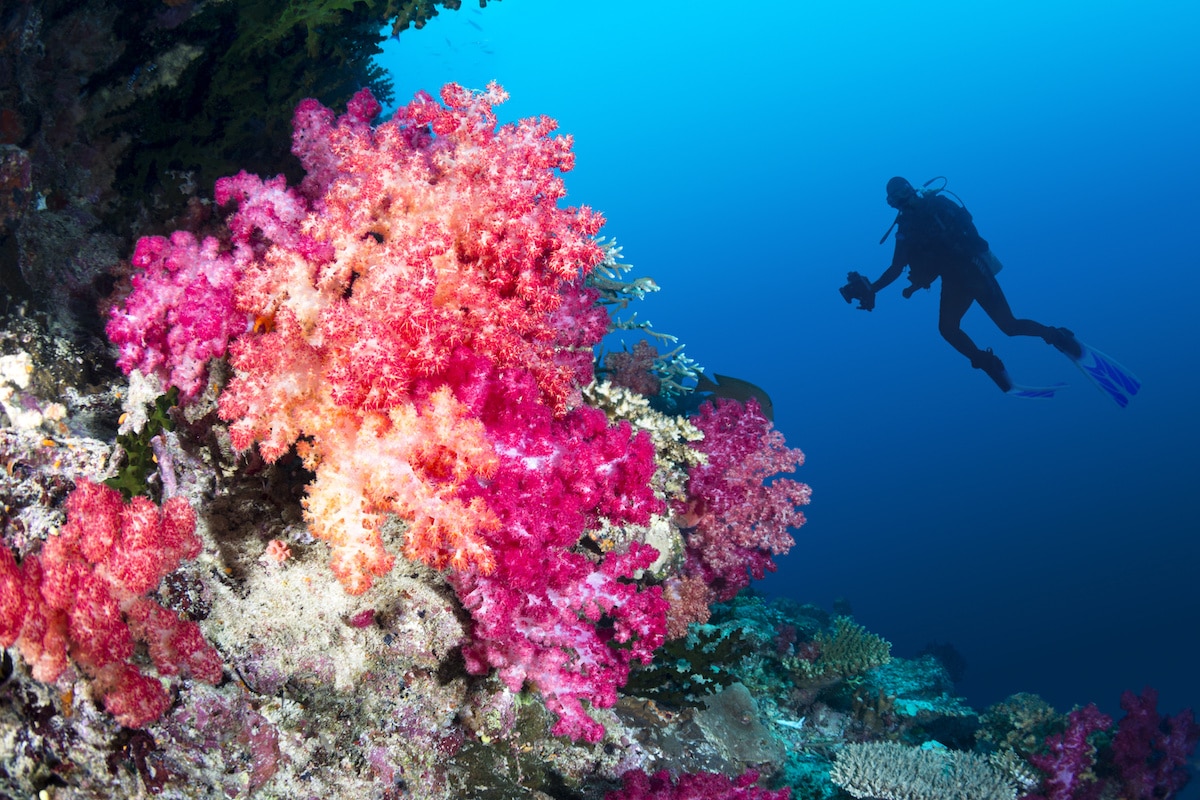
Fiji’s paradise islands host 5 of the 7 species of sea turtle, including green, hawksbill, leatherback, loggerhead and olive ridley.
The coral bommies at Makongi Island and sheer walls of the Wakaya Pass are two of many places you can find turtles there.
- Nesting season: November to January
- Hatching season: January onwards
- Liveaboard top choice: Nai’i
6. Oman
Oman is off the radar for most divers, yet this warm water destination has an array of marine species and thriving reefs without any dive crowds.
The beaches of Oman are known for their nesting turtles and are visited by hawksbill and green sea turtles.
Whether you choose to dive the Daymaniyat Islands, Hallaniyat Islands or Musandam Peninsula, you’re likely to bump into sea turtles going out their day on the reefs.
- Nesting season: May to September
- Hatching season: July onwards
- Liveaboard top choice: Oman Aggressor
7. Thailand
The Similan Islands have some of Thailand’s best dive sites as well as green and hawksbill sea turtles.
As you dive the Similan Islands you’ll be among submerged boulders, thriving reefs and rock formations busy with reef life.
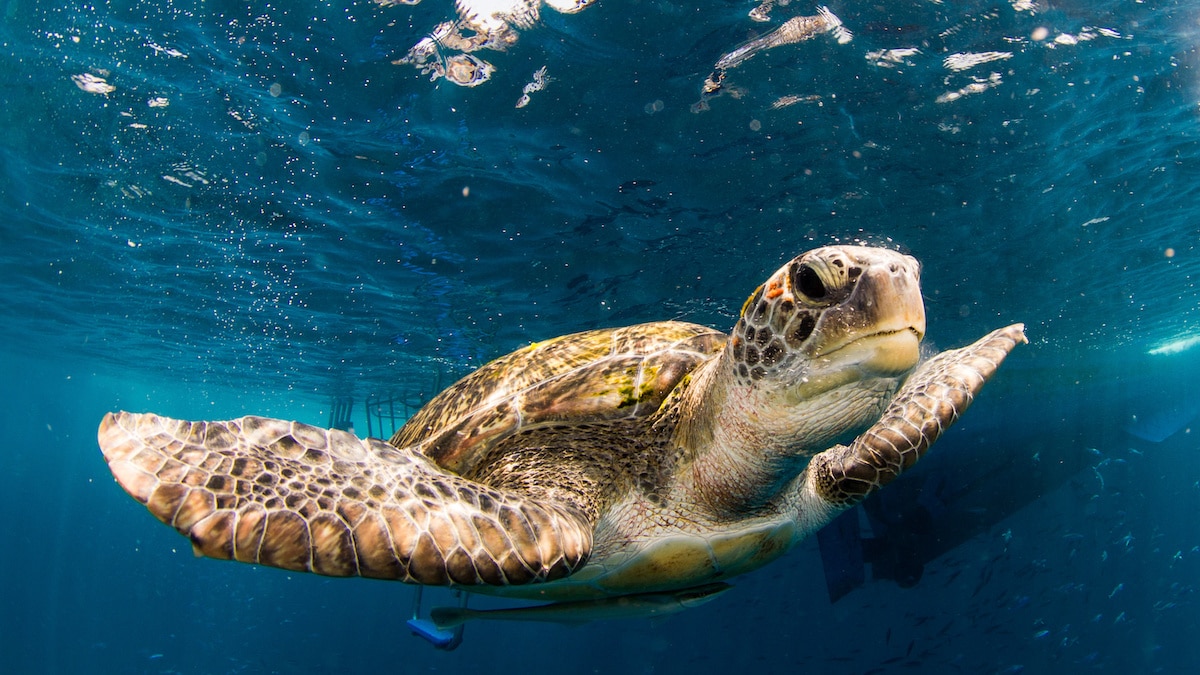
Just remember to look up for sea turtles and out to the blue for passing mantas and whale sharks.
- Nesting season: October to March
- Hatching season: December onwards
- Liveaboard top choice: Similan Explorer
8. Seychelles
The Seychelles has diverse diving at two main island groups, the Inner and Outer Islands.
These dramatically different island groups offer granite landscapes dotted with boulders and drop-offs, plus remote diving at coral atolls and reef islands.
Alphonse Island in the remote Outer Islands hosts nesting green and hawksbill turtles and is well worth visiting for pristine reef diving as well.
- Nesting season: September to March (hawksbill), January to September (green)
- Hatching season: November onwards (hawksbill), March onwards (green)
- Liveaboard top choice: Galatea
9. Cayman Islands
Known for its crystal-clear waters and over 350 dive sites, the Cayman Islands are a dream destination for reef, wall and wreck diving fans.
The warm waters also host loggerhead, green and hawksbill turtles, with plenty of turtles seen at Grand Cayman.
- Nesting season: April/May to November
- Hatching season: July to November
- Liveaboard top choice: Cayman Aggressor V
10. Maldives
South Male, North Male and Ari Atoll are three of the best places to spot tea turtles at the Maldives, but you’re likely to see these charming animals wherever you choose to dive.
Whilst turtle nesting is rare in the Maldives, there are still plenty of turtles in the waters and you’re most likely to see hawksbills.
You can see turtles any time of year but Ari Atoll scuba diving from January to April offers some of the best dive conditions for spotting them.
- Nesting season: N/A
- Hatching season: N/A
- Liveaboard top choice: Horizon 3
Guidelines for interacting with sea turtles
It’s important to be respectful whenever you come across a sea turtle; whether you’re diving or visiting a turtle nesting beach:
- Never touch or try to move sea turtles
- Don’t approach turtles directly, as you may disturb their feeding and resting behaviours
- If you spot a turtle on the beach, keep at least 15 meters away
- Don’t shine a light at turtles
- Avoid flash photography, so you don’t disturb their natural behaviours.
Threats to sea turtles
Despite having survived in the ocean for more than 100 million years, sea turtles face many threats today. Nearly all species of sea turtle are now classified as Endangered.

Current threats to their survival include:
- Coastal developments affecting nesting habitat
- Artificial lighting on beaches disturbing nesting activities
- Plastic pollution causing deaths from plastic ingestion
- High-speed boats and jet skis colliding with sea turtles
- Trade in turtle products & harvesting for meat and eggs
- Entanglement in fishing gear
- Climate change
- By-catch in fisheries.
How you can help protect sea turtles
You can help protect sea turtles with these easy steps:
- Reduce your carbon footprint to help limit your contribution to climate change. Easy steps include using public transport, switching to LED lights and carbon offsetting your travel
- Stop using plastic bags and other single-use plastics
- Don’t purchase any turtle products, such as jewellery or ornaments
- Choose sustainable seafood without by-catch. You can find best fish guides online that tell you which types of seafood to avoid.
 This article was written by divers and writers at LiveAboard.com
This article was written by divers and writers at LiveAboard.com
Marine Life & Conservation
Leading UK-based shark conservation charity, the Shark Trust, is delighted to announce tour operator Diverse Travel as a Corporate Patron
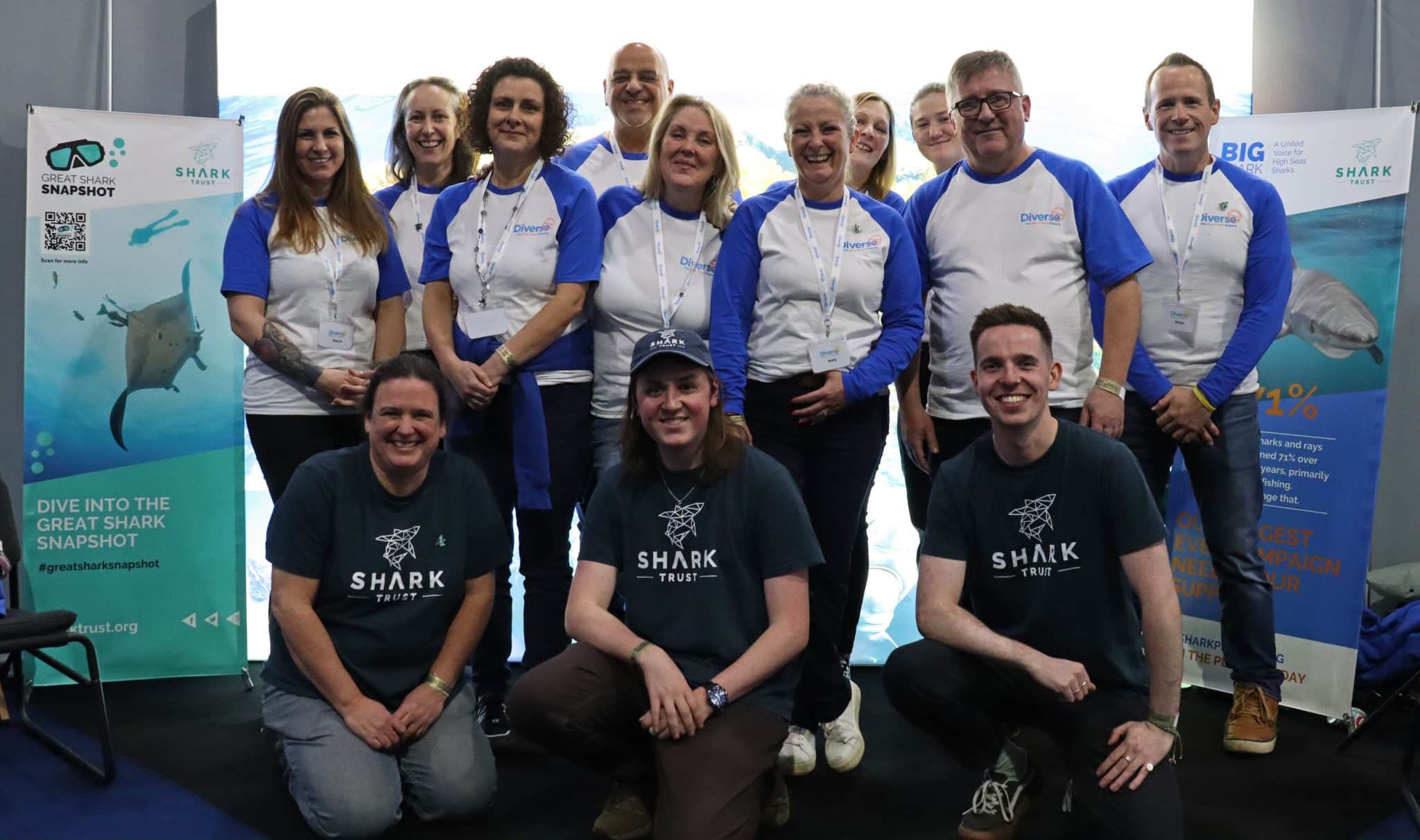
 Corporate Patrons provide a valuable boost to the work of The Shark Trust. The Trust team works globally to safeguard the future of sharks, and their close cousins, the skates and rays, engaging with a global network of scientists, policymakers, conservation professionals, businesses and supporters to further shark conservation.
Corporate Patrons provide a valuable boost to the work of The Shark Trust. The Trust team works globally to safeguard the future of sharks, and their close cousins, the skates and rays, engaging with a global network of scientists, policymakers, conservation professionals, businesses and supporters to further shark conservation.
Specialist tour operator Diverse Travel has operated since 2014 and is committed to offering its guests high quality, sustainable scuba diving holidays worldwide. Working together with the Shark Trust will enable both organisations to widen engagement and encourage divers and snorkellers to actively get involved in shark conservation.
“Sharks are truly at the heart of every diver and at Diverse Travel, we absolutely share that passion. There is nothing like seeing a shark in the wild – it’s a moment that stays with you forever!” says Holly Bredin, Sales & Marketing Manager, Diverse Travel.
“We’re delighted to celebrate our 10th year of business by becoming a Corporate Patron of the Shark Trust. This is an exciting partnership for Diverse and our guests. We will be donating on behalf of every person who books a holiday with us to contribute towards their vital shark conservation initiatives around the world. We will also be working together with the Trust to inspire divers, snorkellers and other travellers to take an active role – at home and abroad – in citizen science projects and other activities.”
Paul Cox, CEO of The Shark Trust, said:
“It’s an exciting partnership and we’re thrilled to be working with Diverse Travel to enable more divers and travellers to get involved with sharks and shark conservation. Sharks face considerable conservation challenges but, through collaboration and collective action, we can secure a brighter future for sharks and their ocean home. This new partnership takes us one more valuable step towards that goal.”
For more information about the Shark Trust visit their website here.
For more about Diverse Travel click here.
Marine Life & Conservation
Shark Trust Asks Divers to help with Shark Sightings this Global Citizen Science Month
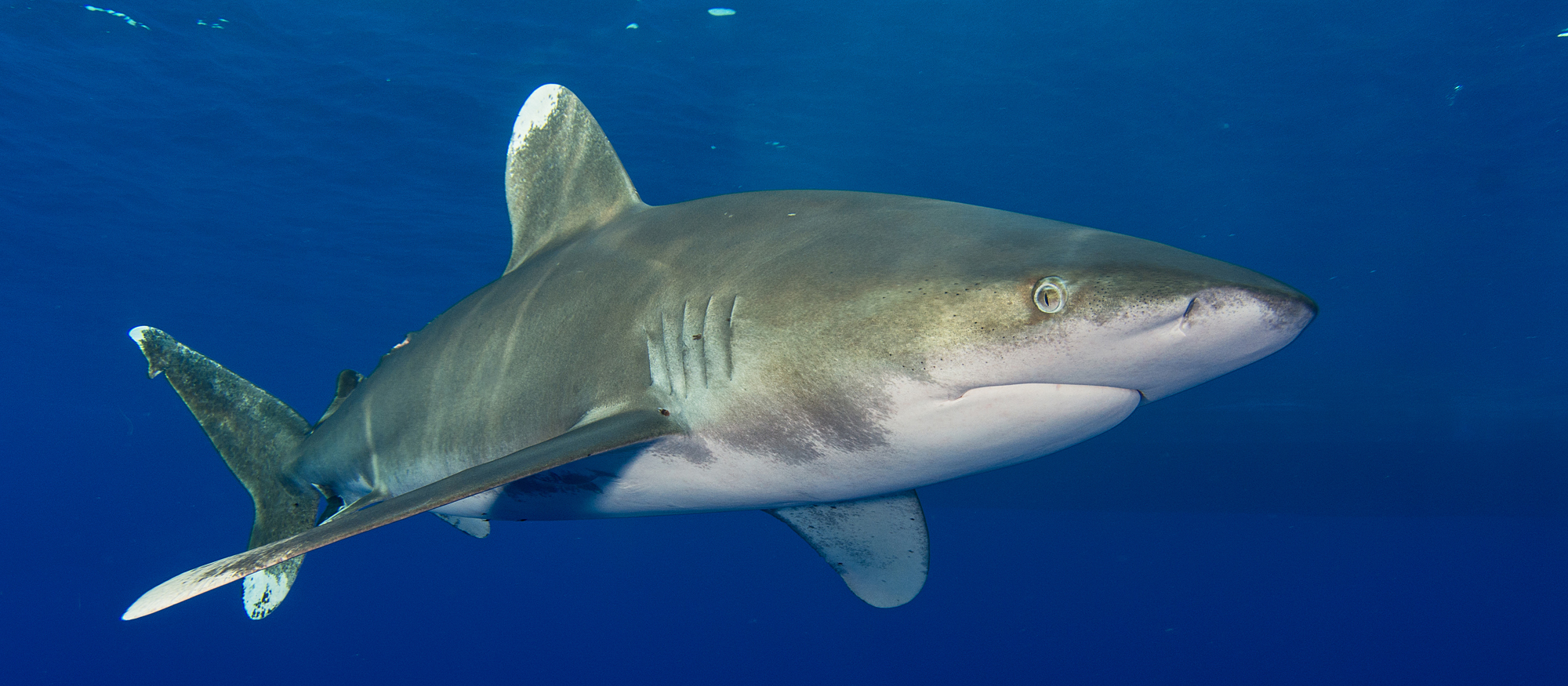
 Whether you are stuck for ideas of what to do with the kids or are off on the dive trip of your dreams. You can get involved in Citizen Science Month and help the Shark Trust by providing vital data about sharks are rays both close to home and further afield.
Whether you are stuck for ideas of what to do with the kids or are off on the dive trip of your dreams. You can get involved in Citizen Science Month and help the Shark Trust by providing vital data about sharks are rays both close to home and further afield.
In addition to reporting the sharks and rays you see on your dives, the eggcases you find on the beach, the Shark Trust is looking for some specific data from divers who are asked to report any Oceanic Whitetip and Basking Sharks.
Oceanic Whitetip Sharks
The Shark Trust are looking specifically for Oceanic Whitetip Shark sightings over the coming weeks and months. So, if you are diving anywhere in the world, please report your sightings via the website or app.
Website: https://recording.sharktrust.org/
App: Search The Shark Trust in your app store
The Oceanic Whitetip. Known for their incredibly long dorsal and pectoral fins, this species was once the most abundant oceanic-pelagic species of shark on the planet.
Large and stocky, they are grey or brown above, and white below and famous for their huge rounded first dorsal fin and paddle-like pectoral fins. The fins also highly prized within the shark fin trade. Whilst they are mostly solitary, Oceanic Whitetips do occasionally hunt in groups.
An inquisitive species, they were easy prey for fisheries. Combined with their low reproductive rate, they were inevitably at high risk of population depletion. And declines of up to 99% have been reported in certain sea areas. They are listed as Critically Endangered on the IUCN Redlist (2019).
Conservation efforts to discourage further declines include listing on CITES Appendix II and CMS Appendix I. They’re also the only species prohibited from take by all the Tuna RFMOs (Regional Fisheries Management Organisations). However, these measures do not mean that Oceanic Whitetips are not still caught – whether targeted or as bycatch – in some parts of the world. With populations declining at such a high rate, effective implementation of management measures is essential to ensure that the species can recover.
If you are lucky enough to get an image of an Oceanic Whitetip and you record your sighting on the Shark Trust app or website YOU CAN WIN! All images submitted with sightings, that also give consent to use in conservation messaging, will be in with a chance to win an Oceanic Whitetip T-shirt and mug. The competition will run until the end of “Shark Month” in July – so keep those sightings (and images) coming in.
Basking Sharks
Basking Shark (Cetorhinus maximus) season is upon us, and the Shark Trust is asking everyone to keep an eye out for these majestic giants over the summer months. If you see any, you can record your sighting to the Basking Shark Sightings database.
Each year, these mighty fish return to British waters to feed on plankton. You may see one, (or a few if you’re really lucky) from around April-October. They can be seen feeding at the surface of the water, where they look like they’re basking in the sun. Thus, their name!
Sighting hotspots around the British Isles include southwest England, Isle of Man, north coast of Ireland, and western Scotland. The Sea of the Hebrides is the most prolific sightings area in Scotland, but they have been spotted all around the coast and have even ventured into some of the sea lochs. The Shark Trust has received thousands of sightings since the Basking Shark project began, but more data is needed to truly understand what is going on with population numbers and distribution. You can help by recording your sightings this summer.
Great Eggcase Hunt
The Shark Trust has an Easter Egg Hunt with a difference for you to try. Take part in the Great Eggcase Hunt and get involved with a big citizen science project that helps shark, ray and skate conservation. And it’s an enjoyable activity for all the family.
The Shark Trust also want snorkellers and divers to record their underwater eggcase findings. Underwater records help pinpoint exactly where sharks and skates are laying their eggs and can help link to beach records. Learning the depth and substrate that they lay on also helps better understand the species.
Find out more: https://www.sharktrust.org/great-eggcase-hunt
Whether you are diving, snorkelling or exploring on the beach you can take part in Citizen Science Month and get actively involved in shark and ray conservation. Find out more: www.sharktrust.org
-

 News3 months ago
News3 months agoHone your underwater photography skills with Alphamarine Photography at Red Sea Diving Safari in March
-

 News2 months ago
News2 months agoCapturing Critters in Lembeh Underwater Photography Workshop 2024: Event Roundup
-

 Marine Life & Conservation Blogs2 months ago
Marine Life & Conservation Blogs2 months agoCreature Feature: Swell Sharks
-

 Blogs2 months ago
Blogs2 months agoMurex Resorts: Passport to Paradise!
-

 Blogs2 months ago
Blogs2 months agoDiver Discovering Whale Skeletons Beneath Ice Judged World’s Best Underwater Photograph
-

 Gear News3 months ago
Gear News3 months agoBare X-Mission Drysuit: Ideal for Both Technical and Recreational Divers
-

 Gear Reviews2 months ago
Gear Reviews2 months agoGear Review: Oceanic+ Dive Housing for iPhone
-

 Marine Life & Conservation2 months ago
Marine Life & Conservation2 months agoSave the Manatee Club launches brand new webcams at Silver Springs State Park, Florida













